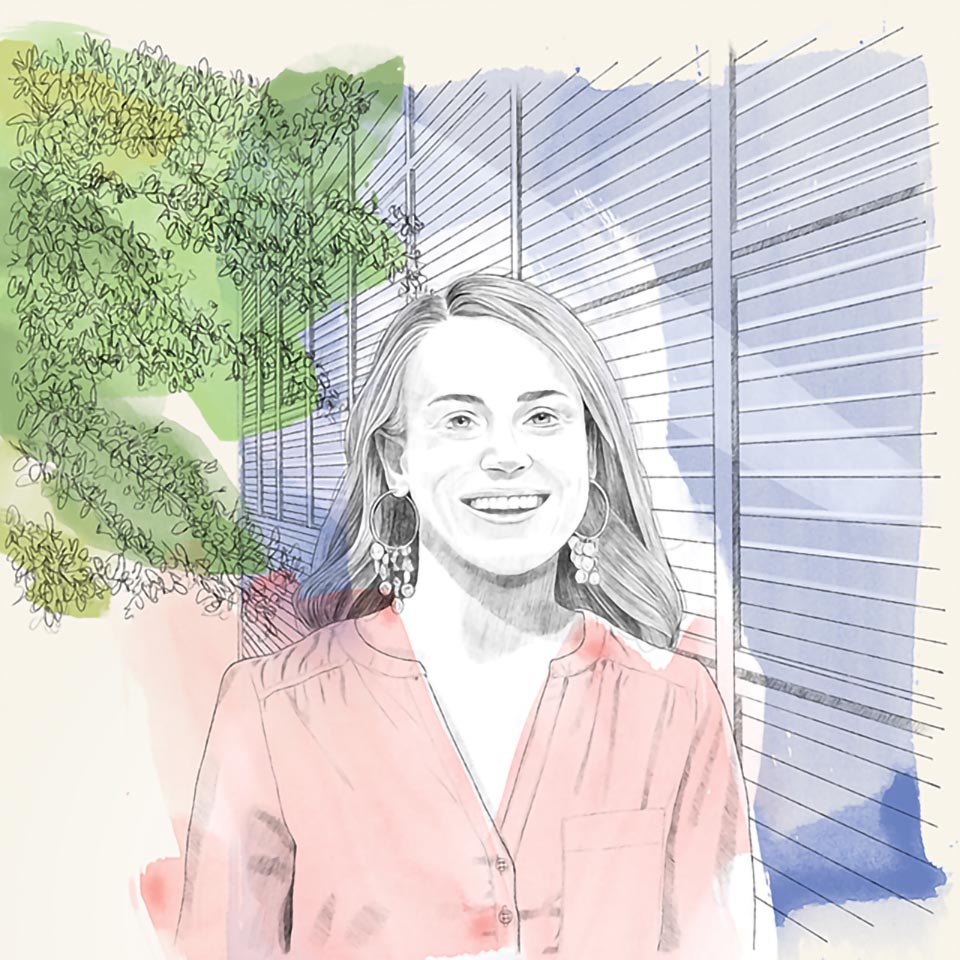As an architect and health planner, Lisa Marchi ’09 is changing health care spaces to meet patients’ needs.

Three years after designing a multi-million- dollar cancer center in Arizona, Lisa Marchi ’09 learned firsthand what it’s like to be a patient with cancer.
Marchi, who is an architect and health planner, was diagnosed with breast cancer a few months after the project she worked on — the Banner MD Anderson Cancer Center in Phoenix — opened in 2019. By the time she finished her treatment, she had changed her outlook on the type of design best suited for patients with cancer.
For example, despite the growing focus on patient privacy, Marchi says she preferred receiving chemotherapy in a communal space at her cancer center in nearby Scottsdale. “I wanted to be near the nursing staff and other patients because it was social,” she says. “It made those eight hours of getting infused with chemicals that are making you feel horrible pass by and it sparked conversation.”
At a young age, Marchi began to sense that some health care facilities weren’t meeting patients’ needs. When she was in middle school, she volunteered at an Alzheimer’s center in Scottsdale, her hometown, and noticed that the facility wasn’t designed with the patients in mind.
“As a 13-year-old, I was having a hard time navigating the building, and I was thinking, ‘How are these people who have memory issues getting to and from their rooms?’” she recalls. “That was the first time I recognized that not all buildings are created equal.
While majoring in art and art history at Colgate, Marchi focused on the history of architecture and wrote her thesis on modern architect Peter Eisenman. Her research on Eisenman introduced her to the concept of the psychology of space.
“That launched my career because I started realizing that buildings have a psychological impact,” says Marchi, who earned a master’s degree in architecture and health from Clemson University.
After returning to Arizona, she joined HKS Architects in Phoenix, working on teams that designed hospitals, emergency rooms, and medical centers throughout the state. Her philosophy was guided by three principles: providing patient-centered care, ensuring access to daylight and nature, and promoting staff efficiency.
When she began designing the Banner MD Anderson Cancer Center in 2017, one of the challenges was balancing the need for patient privacy with the need for visibility by the nursing staff. The infusion center at the facility incorporates both these elements by including private rooms and open bays where patients receive chemotherapy treatment in alcoves separated by low walls.
All of the open infusion bays face a grid of windows, which gives patients access to daylight and the environment. “This is important because there is scientific evidence that views to daylight and nature positively impact healing, both mentally and physically,” Marchi says.
Since 2018, she has worked exclusively on health care facilities for the U.S. Department of Veterans Affairs with AESUS Design, based in Tempe. By joining a smaller firm and leveraging her previous experience, she believes she has more influence on the projects she designs for veterans across the country.
“Instead of being one of six people on a team, I’m leading the project,” says Marchi, who became a project manager at AESUS last January. “It’s much more impactful to me.”
